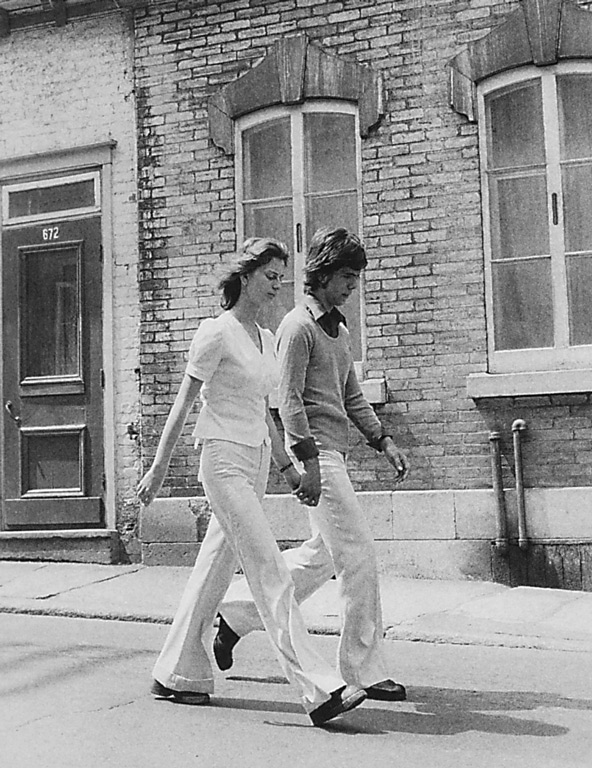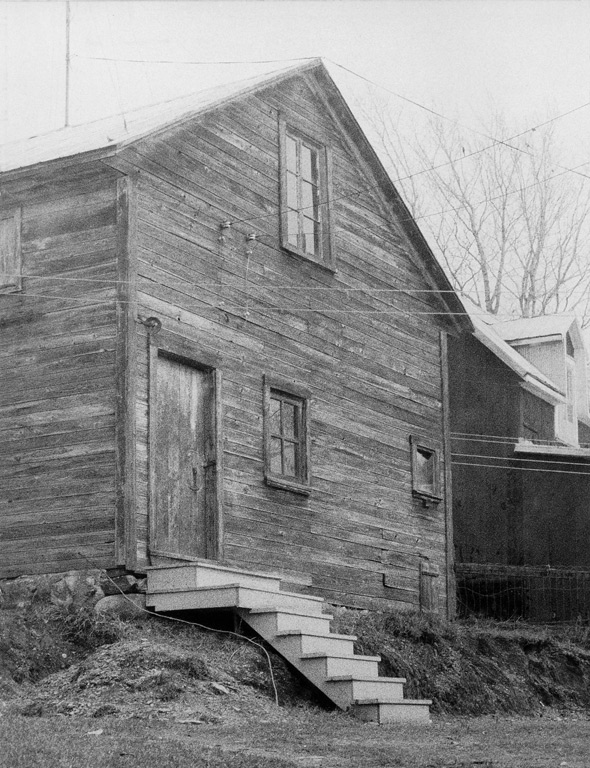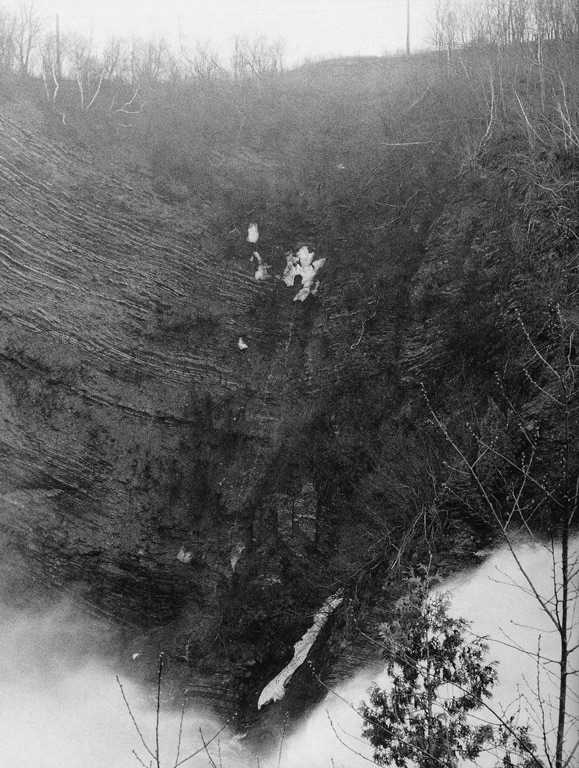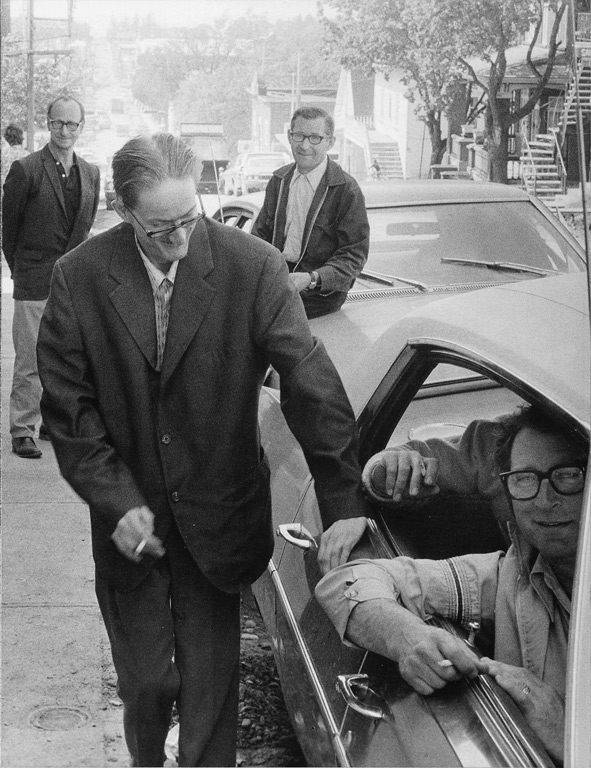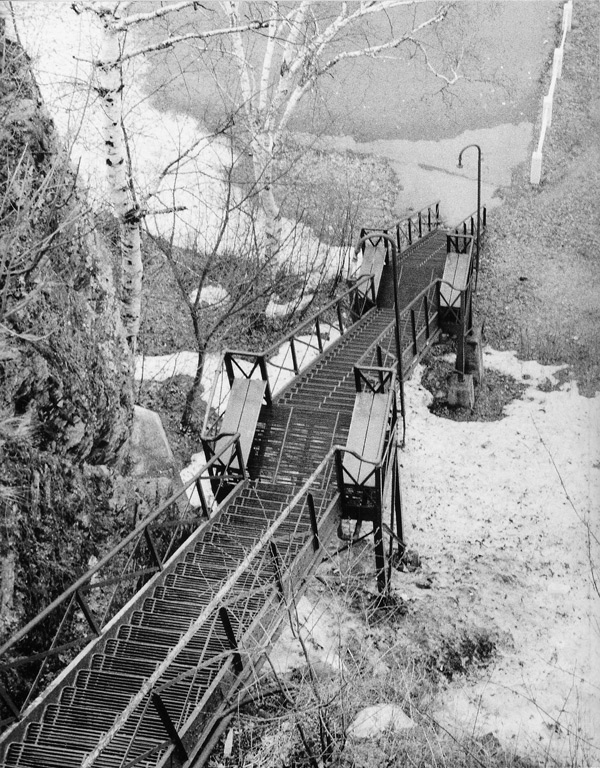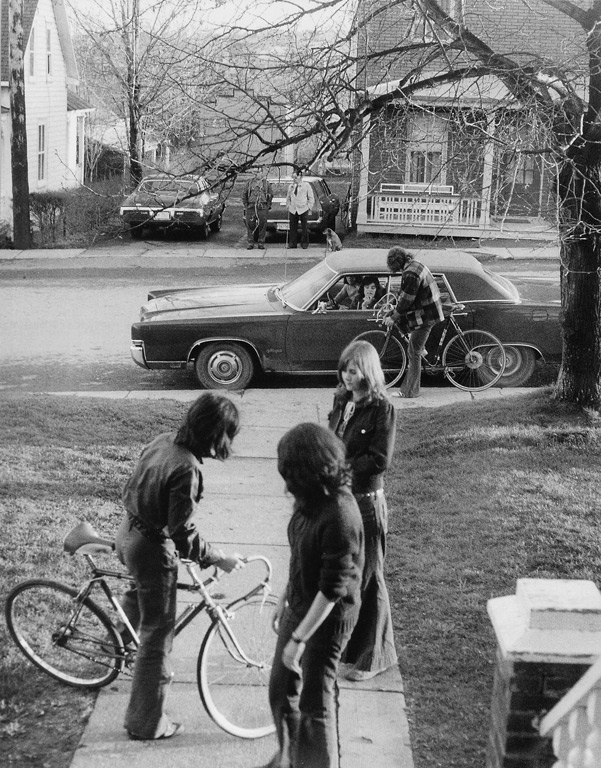[Winter 1994-1995]
by Régis Durand
In a story by Gianni Celati, one of the narrators recounts the case of two women who appear to be haunted or inhabited by images:
“The man from the bookshop in Mantova believed that they deemed their existence of very little importance. It appeared to him that they considered themselves ‘merely as routes, or itineraries of images’ (those were his very words): passageways for images whose content often remains unsure, as the images of dreams, or as is the case with many day-to-day images, or even images of the past they had once seen…” 1
At times, it seems to me that the writer, the artist and, particularly, the photographer are also somewhat like passageways for images in transit – conductors whose life or identity, in light of what they are transmitting, are in themselves of very little importance. The difference, of course, is that the photographer (the artist in general) manages and archives his or her “itineraries,” at once confining them to stringent critical elaboration and affording the alternative possibilities of pentimento. This is what distinguishes artistic activity from simply working with the medium, for example, or from hallucination.
Yet in some instances, the photographer is able to maintain a certain type of ambivalence, a sense of suspension, restoring to the images something of their enigmatic genesis. This is the case with most of Raymonde April’s work, oscillating between autobiography and fiction, between the seizing of what is real and construction. Usually, this fertile indetermination of images is achieved through their ability to convey a sense of continuous flux, of openness. As “images in the present tense,” they are like chemical bodies with multiple valencies, prone to unforeseeable combinations and concatenations. However, these photographs are concerned with more than stylistic effect, which, in itself, would tend to produce images of the real all the while suggesting that they simultaneously belong to the realm of fiction. Indeed, this is about the real and the imaginary, but in the very intertwining of their reciprocal determinations.
The photographs reproduced here clearly express this. They are dated and situated with great detail (1973-74 for the most, in the photographer’s home town, Rivière-du-Loup). One can thus surmise that they function as landmarks (temporal, affective) for the artist. However (or perhaps precisely because of that), they had never before been printed. Was this due to their plethora of reality, which, to a certain extent, condemned them to the domain of privacy, be it in the form of fetishism or of repression? The passage of time was needed in order to enable a reconciliation with their inherent contradictory energies: an energy of desire (of the world, of its promises, of the future as an imagined form of time); an energy of death at work in all experiences of the present, prompting their instantaneous entry into the realm of the past and of disappearance. Even more than the distance afforded by years past, what came into play was the experience of the artist, for whom all is contained in the incessant dialectic between near and far, between appearance and disappearance, between imaginary order and symbolic fulguration. Raymonde April says that, at the time, she did not see the pertinence of these images, and that it was only with time, and the transformations it brings about, that their autonomy and the particularities of their relation to the real became apparent. Had they been viewed earlier on, observing a certain temporal and existential sequence, they could have very well figured as a celebration of various rituals of youth: parents, friends, home, village, and all of the imaginary apparatus that surrounds us at the dawn of adulthood, and that must somehow be fixed before childhood memories turn to dust. Generally speaking, when faced with a celebration of this nature – because, after all, this is no more than an imaginary buttress – viewers tend to be indifferent. But to extract a few of these images twenty years later is to retain something of this childhood desire, while allowing one to see, albeit in a glimpse, that it is the weight of the absence and loss supported by the images that infuses the reality they represent with its particular intensity, and, in short, constitutes it.
These photographs, therefore, bypass nostalgia. They mirror neither the fascination for a time at once near and far nor the illusion of its related temporal stasis. They function, instead, as documents, whose objective quality is an indication of the parting with some (really no more than some) of the imaginary adherences experienced during childhood. Formally, this relative neutrality is marked by specific choices: the quasi-minimalist sobriety of a view of a house – smooth, grey, massively present within the frame, with no particular markings, echoing the flank of a hill, with its sombre striated surface, brightened by only a few spots of snow, and by the clear mass of clouds at the bottom of the image. There is also the descriptive richness and acuteness of a view of a river – open and elongated, a cluster of possible evocations and information, while remaining, to all appearances, an ordinary image, an image, no matter which.2 The portrait of “young Hélène,” of an anonymous couple walking by, of various groups of people by their cars are examples of the many street images that Raymonde April has familiarized us with over the years; they function almost as “filmic” images, both perfectly autonomous and clearly disposed to various combinations and associations. As opposed to film, however, these images resist being swept away by the drive of a logic exterior to their own. This is precisely what empowers them: they are stilled, they are witness to a moment, to a particular configuration of moments and qualities. Within them lies the possibility to bring everything about: stories, memories, imaginary and consoling connections. Yet the possibility is denied: the images retain the abruptness of their fragmentary constitution, which is also a dislocation. And it is this striking heteronomy that invests them with symbolic power. The footbridge, in another image, has neither origin nor destination; what it spans remains unknown. It simply figures. This is not about high-speed lanes, whether referring to technological flux or fleeting hallucinations. A few objects, a few places, dense and unequal – active ruins.
Translated by Jennifer Couëlle
1 Gianni Celati. Narrateurs des plaines, translated from the Italian by Alain Sarrabayrouse, (Paris: Flammarion, 1991), p. 76.
2 “No matter which” is understood here as the translation of the French quelconque, more particularly as used by Gilles Deleuze in the sense of “a space of virtual conjunction, seized as a pure realm of the possible.” L’image-mouvement (Paris: Minuit, 1983), p. 155. With regard to this same question, I refer also to my text on Raymonde April in Réservoirs, soupirs, photographies 1986-1992 (Québec City: VU, centre d’animation et de diffusion de la photographie, 1992).
Raised in Rivière-du-Loup, where she lived for many years, Raymonde April moved to Montreal, where she has been teaching since 1985 at Concordia University. She was co-founder of Québec City’s La Chambre Blanche. Her work is regularly shown across Canada and in Europe, and is part of numerous private and public collections.
Academic and art critic, Régis Durand has, among other contributions, been publishing articles in the magazine Artpress for over ten years. He is the author of numerous books on literature and on photography, director of the collection Lieux de l’écrit for Marval publications, curator of a number of exhibitions, and, since 1992, artistic director of printemps de Cahors. Régis Durand has been following the work of Raymonde April for many years.

